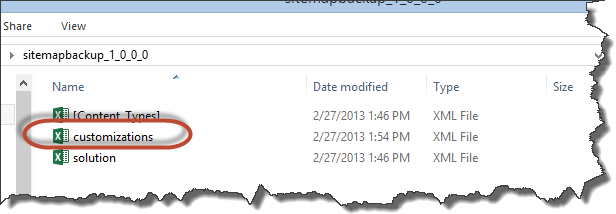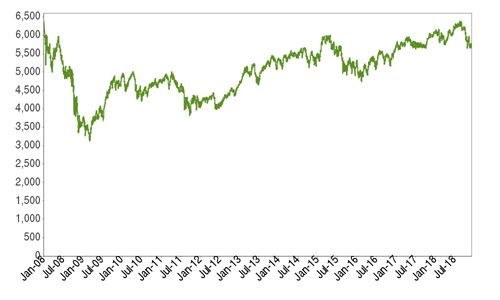The GROUP BY clause groups together rows in a table with non-distinct values for the expression in the GROUP BY clause. For multiple rows in the source table with non-distinct values for expression, theGROUP BY clause produces a single combined row. GROUP BY is commonly used when aggregate functions are present in the SELECT list, or to eliminate redundancy in the output. Expression_n Expressions that are not encapsulated within an aggregate function and must be included in the GROUP BY Clause at the end of the SQL statement. Aggregate_function This is an aggregate function such as the SUM, COUNT, MIN, MAX, or AVG functions. Aggregate_expression This is the column or expression that the aggregate_function will be used on.
These are conditions that must be met for the records to be selected. If more than one expression is provided, the values should be comma separated. DESC sorts the result set in descending order by expression. The presence of HAVING turns a query into a grouped query even if there is no GROUP BY clause. This is the same as what happens when the query contains aggregate functions but no GROUP BY clause. All the selected rows are considered to form a single group, and the SELECT list and HAVING clause can only reference table columns from within aggregate functions.
Such a query will emit a single row if the HAVING condition is true, zero rows if it is not true. Knowing how to use a SQLGROUP BY statement whenever you have aggregate functions is essential. In most cases, when you need an aggregate function, you must add aGROUP BY clause in your query too. The first must contain a distinct first name of the employee and the second – the number of times this name is encountered in our database.
The UNION operator computes the set union of the rows returned by the involved SELECT statements. A row is in the set union of two result sets if it appears in at least one of the result sets. The two SELECT statements that represent the direct operands of the UNION must produce the same number of columns, and corresponding columns must be of compatible data types. ROLLUP is an extension of the GROUP BY clause that creates a group for each of the column expressions.
Additionally, it "rolls up" those results in subtotals followed by a grand total. Under the hood, the ROLLUP function moves from right to left decreasing the number of column expressions that it creates groups and aggregations on. Since the column order affects the ROLLUP output, it can also affect the number of rows returned in the result set. The Group by clause is often used to arrange identical duplicate data into groups with a select statement to group the result-set by one or more columns.
This clause works with the select specific list of items, and we can use HAVING, and ORDER BY clauses. Group by clause always works with an aggregate function like MAX, MIN, SUM, AVG, COUNT. Aggregate functions, if any are used, are computed across all rows making up each group, producing a separate value for each group. When a FILTER clause is present, only those rows matching it are included in the input to that aggregate function. When the optional WITH ORDINALITY clause is added to the function call, a new column is appended after all the function's output columns with numbering for each row.
Spark also supports advanced aggregations to do multiple aggregations for the same input record set via GROUPING SETS, CUBE, ROLLUP clauses. The grouping expressions and advanced aggregations can be mixed in the GROUP BY clause and nested in a GROUPING SETS clause. See more details in the Mixed/Nested Grouping Analytics section. When a FILTER clause is attached to an aggregate function, only the matching rows are passed to that function. The GROUP BY clause groups identical output values in the named columns.
Every value expression in the output column that includes a table column must be named in it unless it is an argument to aggregate functions. GROUP BY is used to apply aggregate functions to groups of rows defined by having identical values in specified columns. The GROUP BY clause defines groups of output rows to which aggregate functions can be applied. This syntax allows users to perform analysis that requires aggregation on multiple sets of columns in a single query.
Complex grouping operations do not support grouping on expressions composed of input columns. Athena supports complex aggregations using GROUPING SETS, CUBE and ROLLUP. GROUP BY GROUPING SETS specifies multiple lists of columns to group on.
GROUP BY CUBE generates all possible grouping sets for a given set of columns. GROUP BY ROLLUP generates all possible subtotals for a given set of columns. If specific tables are named in a locking clause, then only rows coming from those tables are locked; any other tables used in the SELECT are simply read as usual. A locking clause without a table list affects all tables used in the statement. If a locking clause is applied to a view or sub-query, it affects all tables used in the view or sub-query.
However, these clauses do not apply to WITH queries referenced by the primary query. If you want row locking to occur within a WITH query, specify a locking clause within the WITH query. The value PRECEDING and value FOLLOWING cases are currently only allowed in ROWS mode. They indicate that the frame starts or ends with the row that many rows before or after the current row.
Value must be an integer expression not containing any variables, aggregate functions, or window functions. The value must not be null or negative; but it can be zero, which selects the current row itself. The ORDER BY clause specifies a column or expression as the sort criterion for the result set. If an ORDER BY clause is not present, the order of the results of a query is not defined.
Column aliases from a FROM clause or SELECT list are allowed. If a query contains aliases in the SELECT clause, those aliases override names in the corresponding FROM clause. It is not permissible to include column names in a SELECT clause that are not referenced in the GROUP BY clause. The only column names that can be displayed, along with aggregate functions, must be listed in the GROUP BY clause. Since ENAME is not included in the GROUP BYclause, an error message results. A functional dependency exists if the grouped columns are the primary key of the table containing the ungrouped column.
It filters non-aggregated rows before the rows are grouped together. To filter grouped rows based on aggregate values, use the HAVING clause. The HAVING clause takes any expression and evaluates it as a boolean, just like the WHERE clause. As with the select expression, if you reference non-grouped columns in the HAVINGclause, the behavior is undefined. If you don't use GROUP BY, either all or none of the output columns in the SELECT clause must use aggregate functions.
If all of them use aggregate functions, all rows satisfying the WHERE clause or all rows produced by the FROM clause are treated as a single group for deriving the aggregates. In the Group BY clause, the SELECT statement can use constants, aggregate functions, expressions, and column names. Like most things in SQL/T-SQL, you can always pull your data from multiple tables. Performing this task while including a GROUP BY clause is no different than any other SELECT statement with a GROUP BY clause. The fact that you're pulling the data from two or more tables has no bearing on how this works. In the sample below, we will be working in the AdventureWorks2014 once again as we join the "Person.Address" table with the "Person.BusinessEntityAddress" table.
I have also restricted the sample code to return only the top 10 results for clarity sake in the result set. Here, you can add the aggregate functions before the column names, and also a HAVING clause at the end of the statement to mention a condition. The above query includes the GROUP BY DeptId clause, so you can include only DeptId in the SELECT clause.
You need to use aggregate functions to include other columns in the SELECT clause, so COUNT is included because we want to count the number of employees in the same DeptId. You must use the aggregate functions such as COUNT(), MAX(), MIN(), SUM(), AVG(), etc., in the SELECT query. The result of the GROUP BY clause returns a single row for each value of the GROUP BY column. In conclusion, we didn't say that the SQLGROUP BY clause is one of the most powerful tools out there for no reason.
It is preferred over the SELECT DISTINCT statement because it can be combined with aggregate functions. You can also use it with SQLORDER BY. However, you must make sure that you keep the right order when writing it. But this technique is constantly being applied in queries, as it clarifies the analysis undertaken. If you are interested in learning about what else you can combine with the GROUP BY statement, you can learn all about the HAVING clause. FILTER is a modifier used on an aggregate function to limit the values used in an aggregation.
All the columns in the select statement that aren't aggregated should be specified in a GROUP BY clause in the query. GROUP BY will condense into a single row all selected rows that share the same values for the grouped expressions. An expression used inside a grouping_element can be an input column name, or the name or ordinal number of an output column , or an arbitrary expression formed from input-column values. In case of ambiguity, a GROUP BY name will be interpreted as an input-column name rather than an output column name. This left-hand row is extended to the full width of the joined table by inserting null values for the right-hand columns.
Note that only the JOIN clause's own condition is considered while deciding which rows have matches. SQL allows the user to store more than 30 types of data in as many columns as required, so sometimes, it becomes difficult to find similar data in these columns. Group By in SQL helps us club together identical rows present in the columns of a table. This is an essential statement in SQL as it provides us with a neat dataset by letting us summarize important data like sales, cost, and salary. Aggregate functions are functions that take a set of rows as input and return a single value. In SQL we have five aggregate functions which are also called multirow functions as follows.
Optionally it is used in conjunction with aggregate functions to produce the resulting group of rows from the database. Otherwise, each column referenced in the SELECT list outside an aggregate function must be a grouping column and be referenced in this clause. All rows output from the query that have all grouping column values equal, constitute a group. The GROUP BY clause arranges rows into groups and an aggregate function returns the summary (count, min, max, average, sum, etc.,) for each group.
The SUM() function returns the total value of all non-null values in a specified column. Since this is a mathematical process, it cannot be used on string values such as the CHAR, VARCHAR, and NVARCHAR data types. When used with a GROUP BY clause, the SUM() function will return the total for each category in the specified table. IIt is important to note that using a GROUP BY clause is ineffective if there are no duplicates in the column you are grouping by. A better example would be to group by the "Title" column of that table.
The SELECT clause below will return the six unique title types as well as a count of how many times each one is found in the table within the "Title" column. When you start learning SQL, you quickly come across the GROUP BY clause. Data grouping—or data aggregation—is an important concept in the world of databases. In this article, we'll demonstrate how you can use the GROUP BY clause in practice.
We've gathered five GROUP BY examples, from easier to more complex ones so you can see data grouping in a real-life scenario. As a bonus, you'll also learn a bit about aggregate functions and the HAVING clause. All output expressions must be either aggregate functions or columns present in the GROUP BY clause. In this query, all rows in the EMPLOYEE table that have the same department codes are grouped together.
How do you use group by clause with SQL statement what is its use The aggregate function AVG is calculated for the salary column in each group. The department code and the average departmental salary are displayed for each department. In the SQL-92 standard, an ORDER BY clause can only use output column names or numbers, while a GROUP BY clause can only use expressions based on input column names. The result of EXCEPT does not contain any duplicate rows unless the ALL option is specified.
With ALL, a row that has m duplicates in the left table and n duplicates in the right table will appear max(m-n,0) times in the result set. DISTINCT can be written to explicitly specify the default behavior of eliminating duplicate rows. Another difference is that these expressions can contain aggregate function calls, which are not allowed in a regular GROUP BY clause. They are allowed here because windowing occurs after grouping and aggregation. The FROM clause specifies one or more source tables for the SELECT. If multiple sources are specified, the result is the Cartesian product of all the sources.
But usually qualification conditions are added to restrict the returned rows to a small subset of the Cartesian product. Use theSQL GROUP BYClause is to consolidate like values into a single row. The group by returns a single row from one or more within the query having the same column values. Its main purpose is this work alongside functions, such as SUM or COUNT, and provide a means to summarize values. The INTERSECT operator returns rows that are found in the result sets of both the left and right input queries.
Unlike EXCEPT, the positioning of the input queries does not matter. Set operators combine results from two or more input queries into a single result set. You must specify ALL or DISTINCT; if you specify ALL, then all rows are retained. The USING clause requires a column list of one or more columns which occur in both input tables. It performs an equality comparison on that column, and the rows meet the join condition if the equality comparison returns TRUE. Corner cases exist where a distinct pivot_columns can end up with the same default column names.
For example, an input column might contain both aNULL value and the string literal "NULL". When this happens, multiple pivot columns are created with the same name. To avoid this situation, use aliases for pivot column names.
SELECT AS STRUCT can be used in a scalar or array subquery to produce a single STRUCT type grouping multiple values together. Scalar and array subqueries are normally not allowed to return multiple columns, but can return a single column with STRUCT type. The GROUP BY clause divides the rows returned from the SELECTstatement into groups.

























No comments:
Post a Comment
Note: Only a member of this blog may post a comment.